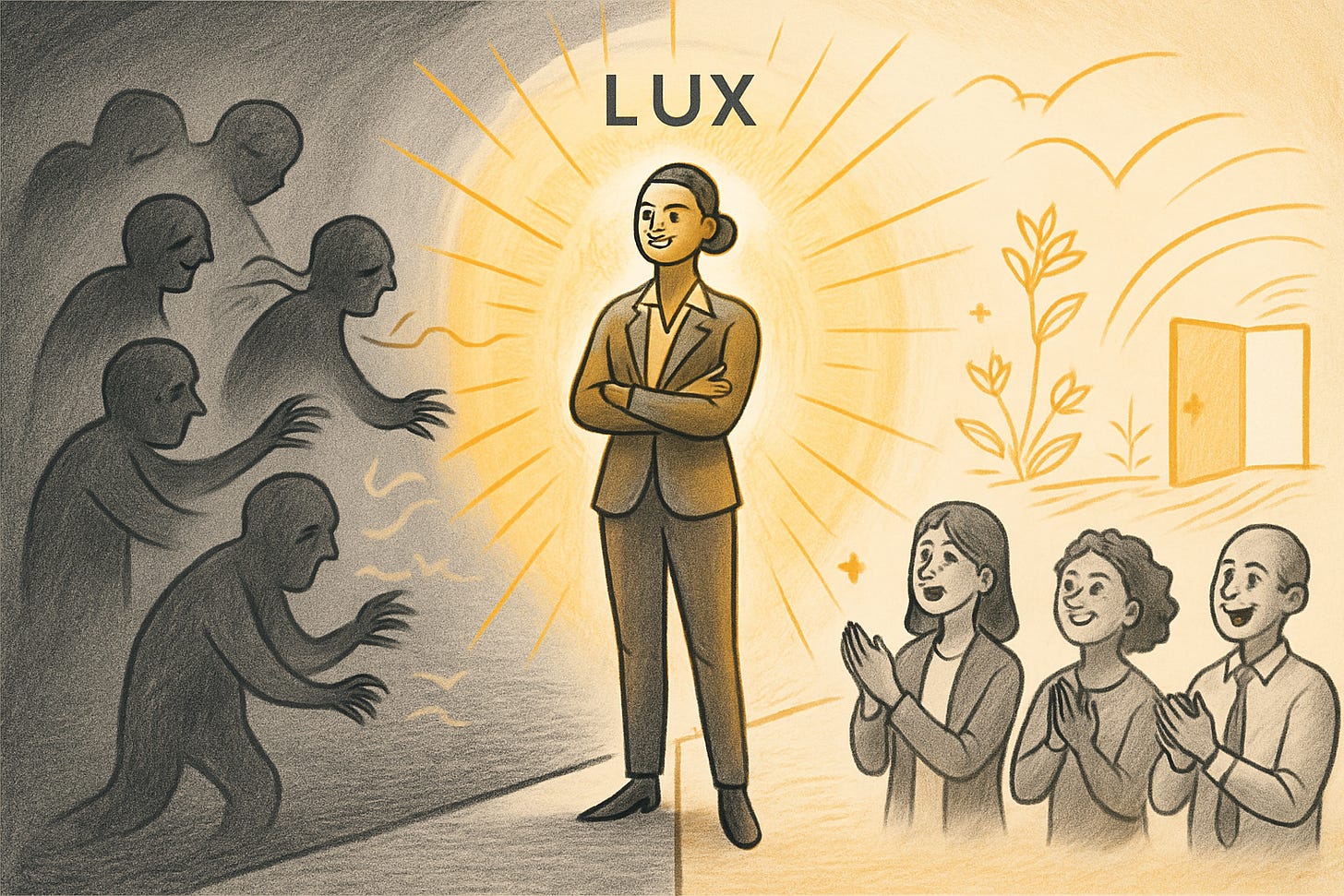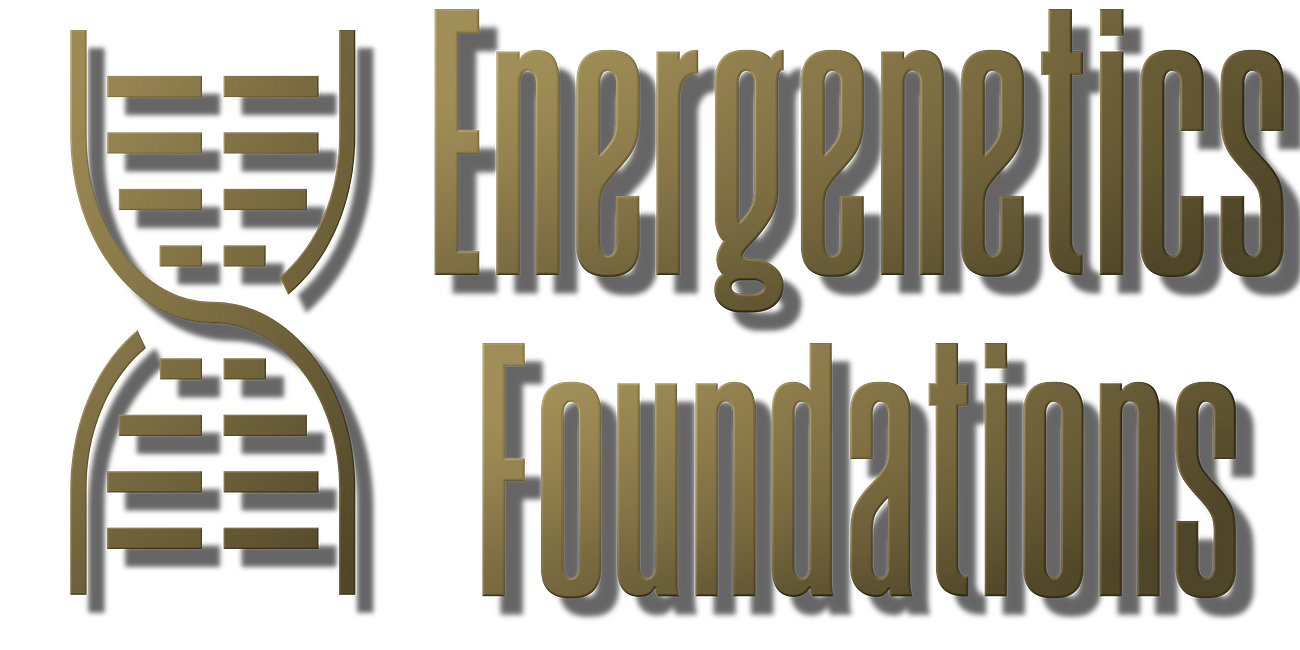How to Know When It's Time to Fire Your Client
Before They Fire You
Liberation Intel: What you'll discover—how energetic vampires masquerade as paying customers, why professional sovereignty attracts higher-quality clients, and when strategic exits become acts of mutual liberation. For service providers ready to enforce boundaries that elevate standards using LUX discernment and professional selectivity principles.
The email landed in my inbox at 11:47 PM on a Sunday.
"I need the proposal revised again. The timeline you suggested won't work. Also, can you reduce your fee by 30%? My budget has changed. I need this by tomorrow morning."
I stared at the screen, feeling that familiar knot in my stomach. This was the fourth revision request in two weeks. The scope had tripled. The timeline had compressed. The budget had shrunk.
And I was still saying yes.
Why? Because I was afraid. Afraid of losing the revenue. Afraid of confrontation. Afraid of being seen as "difficult" or "inflexible."
But as I sat there at midnight, rewriting a proposal for the fifth time for a client who clearly didn't value my work, I realized something: I wasn't serving this client. I was enabling them.
And they weren't just a bad client. They were training me to be a bad service provider.
That was the night I learned the hardest lesson in business: Sometimes the most profitable thing you can do is fire a client before they fire you.
The Gene Keys of Boundary Violation
Through my Gene Keys work, I've discovered that certain people are magnets for boundary violations. If you have strong Gene Key 27 energy (like my Culture 27.1), you're naturally nurturing and want to take care of others. Gene Key 25 energy makes you want to love unconditionally. Gene Key 6 can make you avoid conflict at all costs.
These are beautiful gifts when working with aligned clients. But they become liabilities when working with energy vampires who see your generosity as weakness to exploit.
Your desire to serve isn't the problem. The problem is serving people who don't want to be served - they want to be enabled.
The LUX Test: Energy Drain vs. Energy Gain
In my Energenetics practice, I teach clients to use their LUX connection as a compass for healthy relationships. When you're connected to your crystal-clear essence, you become exquisitely sensitive to what nourishes versus what depletes you.
Here's the test: After every interaction with a client, notice your energy level. Do you feel inspired and energized? Or do you feel drained and depleted?
Healthy client relationships are energetically reciprocal. Even when the work is challenging, you should feel energized by the collaboration. If every interaction leaves you exhausted, your system is telling you this relationship is out of alignment.
The clearer your LUX connection, the more accurate this energetic feedback becomes.
The Red Flags That Predict Disaster
I've worked with hundreds of entrepreneurs and consultants, and the warning signs are always the same. These red flags usually appear in the first few interactions, but we ignore them because we're focused on closing the deal:
Watch for scope creep from day one - they start asking for "just one small addition" before the contract is even signed. This tests your boundaries and trains you to accept expanding demands without expanding compensation.
Everything becomes urgent with these clients. Every request is needed "ASAP," creating artificial pressure that prevents you from thinking clearly about whether their demands are reasonable. They keep mentioning what competitors charge or asking you to match lower quotes, signaling they see you as a commodity rather than a strategic partner.
Another red flag is when they want to skip your standard procedures, bypass your systems, or circumvent your boundaries "just this once." This tests whether you'll compromise your standards for money. Worst of all, they position their project as a favor to you rather than a fair exchange. Phrases like "this could be great for your portfolio" or "think of the exposure" signal an exploitative mindset.
The Energetics of Toxic Client Relationships
Traditional business advice focuses on managing difficult clients through better communication and clearer contracts. But Energenetics reveals the deeper dynamic: Some client relationships are energetically parasitic from the start.
When your LUX connection is strong, you can sense:
Whether a potential client sees you as a partner or a vendor
Whether they respect your expertise or just want cheap labor
Whether they're committed to success or just shopping for validation
Whether the relationship will be generative or extractive
This energetic reading gives you information no contract can provide.
Why Smart People Keep Bad Clients
There are three main reasons successful professionals tolerate toxic clients:
Fear of financial scarcity drives most of these decisions. "I can't afford to turn down revenue right now," we tell ourselves. But toxic clients often cost more than they pay when you factor in stress, additional work, and opportunity cost.
Then there's the savior complex - "If I just explain it better, work harder, or be more patient, I can turn this around." But you can't fix someone who doesn't want to be fixed.
Finally, many professionals confuse martyrdom with professionalism, believing that "a good service provider should be able to work with anyone." This isn't professional excellence - it's poor business strategy.
The irony is that keeping bad clients prevents you from attracting good ones. Your energy is finite. Every hour spent managing a toxic client is an hour not invested in serving someone who values your work.
The Strategic Exit Framework for Clients
Firing a client strategically isn't about burning bridges or making dramatic announcements. It's about creating clean completion that preserves your reputation while protecting your resources.
Phase 1: Clear Assessment Is this a communication issue that can be resolved, or a fundamental misalignment that can't? If you've already had "the conversation" about boundaries and nothing changed, you have your answer.
Phase 2: Professional Notice Give them appropriate notice and explain your reasoning professionally. "I've realized that our working styles aren't the best fit. I want to transition this project in a way that serves your needs while allowing me to focus on clients where I can provide the most value."
Phase 3: Smooth Transition Help them find alternative resources when possible. Provide complete documentation of work completed. Finish current deliverables professionally.
Phase 4: Clean Completion Issue final invoices promptly. Return any materials that belong to them. Leave the relationship in a state where you could work together again under different circumstances if needed.
The Sovereignty of Professional Standards
Here's what nobody tells you about firing clients: It's an act of professional sovereignty. Every time you choose to end a relationship that doesn't serve both parties, you're asserting your right to work with people who value what you provide.
This requires courage because it means:
Potentially losing revenue in the short term
Facing uncertainty about your pipeline
Having difficult conversations
Taking responsibility for your professional standards
But this is exactly what professional sovereignty means - the power to choose who you work with based on alignment rather than desperation.
The Magnetic Effect of Higher Standards
Here's the paradox: The more selective you become about clients, the more attractive you become to high-quality clients. When you demonstrate that you have standards and enforce boundaries, you signal that your work has value.
Good clients want to work with professionals who are selective about who they serve. They see your standards as evidence of your expertise and your boundaries as proof of your professionalism.
Bad clients want to work with people who are desperate enough to accept anything. By maintaining standards, you automatically filter out the clients who would drain your energy.
From Service Provider to Strategic Partner
The shift happens when you stop seeing yourself as someone who should be grateful for any client and start seeing yourself as someone who provides strategic value to the right clients.
This reframe changes everything:
You interview clients as much as they interview you
You assess fit before discussing price
You design relationships for mutual success rather than just completion
You view client relationships as investments rather than transactions
Your reputation becomes that of someone who only works with serious clients on meaningful projects - making you more attractive to exactly those types of opportunities.
When to Fire Clients: The Energenetics Checklist
Use your LUX connection to evaluate these questions honestly:
Start with an honest energy assessment. Do you dread their calls and emails? Do you feel energized or depleted after working on their projects? Are you doing your best work or just trying to survive the relationship?
Next, evaluate whether they actually respect you. Do they honor your time and expertise, or do they constantly try to circumvent your processes? Do they pay promptly and without drama? Consider the growth potential - is this relationship helping you develop skills you want to strengthen, and are you proud to have this work in your portfolio?
Finally, assess alignment. Do your values align with how they operate their business? Are you comfortable with the kind of work they're asking you to do? Does this relationship reflect who you want to be professionally?
If the majority of answers are negative, you have a strategic exit opportunity.
The Liberation in Professional Selectivity
The most profound shift happens when you realize that firing bad clients isn't about rejecting them - it's about making space for relationships that serve everyone involved.
Every strategic client exit is a vote of confidence in your ability to attract better opportunities. Every boundary you enforce is an act of respect for your own professional standards. Every toxic relationship you end is an investment in your future success.
This is the essence of professional liberation: the freedom to choose who you work with based on alignment and mutual value rather than fear and scarcity.
The Invitation to Professional Sovereignty
If you're currently working with clients who drain your energy, disrespect your boundaries, or undervalue your work, ask yourself:
What would I charge if I knew my work was truly valuable?
How would I structure relationships if I trusted my ability to attract good clients?
What would I say no to if I weren't afraid of missing out?
Your answers will show you where your professional standards need to be raised.
The art of firing clients isn't about being difficult or demanding. It's about creating the conditions for your best work to emerge. It's about freeing your energy for clients who deserve your full creativity and expertise.
The world needs professionals who do excellent work for people who value excellence. You can't provide that level of service when you're exhausted by clients who see you as a commodity.
Your competitive advantage isn't your willingness to work with anyone for any price. It's your ability to recognize mutual fit and create relationships where everyone wins.
Time to trust that your best clients are looking for exactly what you provide - when you provide it on your terms.
If you're ready to develop the confidence to fire clients strategically and attract relationships that energize rather than drain you, my Sovereignty Guide work helps professionals recognize true alignment and enforce boundaries that serve everyone. Because the best clients want to work with people who have standards.
Stop accepting anyone who can pay. Start attracting clients who value what you provide.
German: Wie Du erkennst, wann es Zeit ist, Deinen Kunden zu feuern (bevor er dich feuert)
Further Reading 📚
Step 1: Trust your intuition
Step 2: Strategic Exit
Start Here: Your Path to Energetic Sovereignty
You've found your way here because you're done with spiritual dependency.






